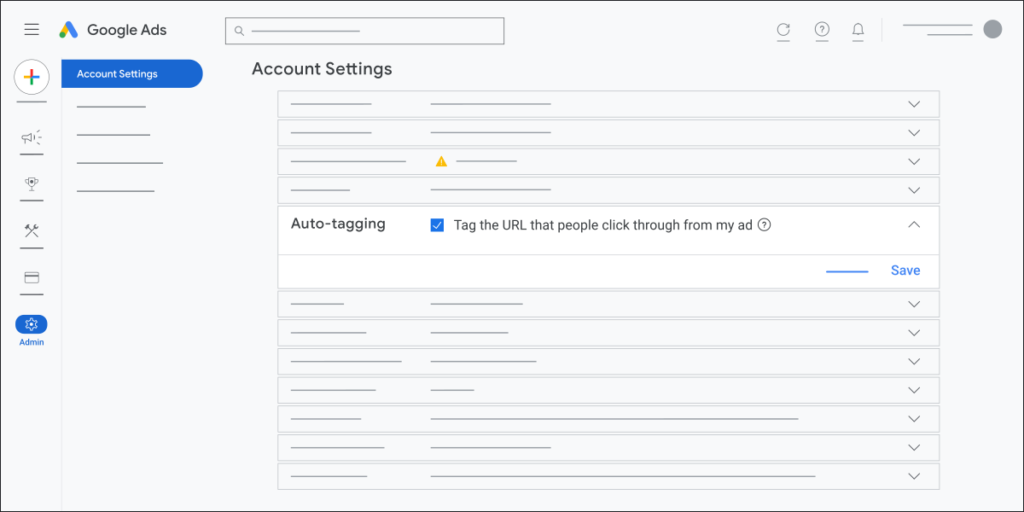
Have you received an email from Google saying you’re eligible to use gBraid with your iOS campaigns? As a result of changes in privacy regulation, Google’s click identifier (GCLID), a tracking parameter used by Google to sync information between a Google Analytics account and a Google Ads account, is no longer being used without user consent on iOS14+.
Instead, Google Ads has introduced two new URL parameters to comply with Apple’s policies and to help measure the results of your ads on iOS. These parameters are known as gBraid for web-to-app measurement, and WBRAID for app-to-web measurement.
We’ll explain what this change means for your Google Ads and Analytics so you won’t be caught off guard.
What Are gBraid and WBRAID?
gBraid is a URL parameter introduced by Google to help marketers measure the results of your Search, Shopping, Display, and Performance Max deep-link ads on iOS. This parameter, &gBraid={gBraid}, will help you attribute app conversions back to your web ad campaigns and provide more accurate measurement on iOS while optimizing your campaigns’ performance. You can learn more about iOS 14 campaign measurement in Google’s documentation.
Both WBRAID and gBraid parameters function very similarly. WBRAID is used for web-to-app measurements, and gBraid is used for app-to-app measurements.
The new parameters work in conjunction with the modeled online conversion, which doesn’t attribute conversions to an individual user, but rather provides a holistic report on conversions in compliance with user privacy.
These parameters use aggregation techniques and techniques like de-identification that try to ensure cross-site behavior cannot be tied back to an individual user.
These privacy-centric modeling and aggregation measurements help ensure that these parameters are in compliance with Apple’s ATT framework.
Translate all your data into clear insights
Discover how to future-proof your marketing data strategy with AI-powered analytics.

What is Happening to GCLID?
Despite this update, GCLID will still be used by Google on non-iOS devices that aren’t impacted by the ATT framework. Whenever a non-iOS user clicks a Google ad, Google will keep appending a unique parameter to the destination URL, letting GCLID communicate the information about post-click happenings back to Google.
This is some of the information that GCLID shares with Google, as of May 2023:
- Source
- Campaign
- Keyword data
- Match type
- Medium
- Traffic information
- User details
- Landing page
- Conversion tracking
- Page data

The Impact on Your Google Analytics Reporting
The existing integration between Google Analytics and Google Ads will continue to function effectively, including the importing of data reports and conversion reports from GA4 or Universal Analytics to Google Ads.
Upon receiving access to gBraid, if you’re already following all the steps to activate gBraid, Google has announced you may notice fluctuations in reporting, including an alteration in conversions.
If you aren’t interested in adding the parameter, Google allows marketers to opt-out at any time.
Future-Proof Your Data with Cookieless Analytics
While this update may be beneficial for Google’s outdated tracking system, cookieless analytics present a simpler option for understanding the effectiveness of digital campaigns, eliminating the need for complex parameter-based tracking systems.
Understand your customer journey analytics
See how your users behave, find drop-offs, and receive actionable insights with AI.

Unlike traditional methods that require appending parameters to URLs or rely on specific identifiers, cookieless analytics leverages alternative techniques that work seamlessly across platforms and devices.
Adopting cookieless analytics brings several advantages, making it a more future-proof and simplified approach to tracking effectiveness:
- Compliance with Privacy Regulations:
As privacy regulations, such as the General Data Protection Regulation (GDPR) and California Consumer Privacy Act (CCPA), become more stringent, cookieless analytics offers a compliant way to collect and analyze data. By focusing on privacy-centric practices, marketers can avoid potential legal risks and maintain consumer trust.
- Cross-Device and Cross-Platform Insights:
Cookieless analytics provides a unified view of user behavior across devices and platforms, enabling marketers to understand the entire customer journey. This holistic approach ensures that campaign effectiveness is accurately measured, regardless of the user’s chosen device or platform.
- Long-Term Data Sustainability:
Unlike cookies that have a limited lifespan and can be easily cleared by users, cookieless analytics ensures long-term data sustainability. By leveraging techniques such as server-side tracking and machine learning algorithms, marketers can gather valuable insights over extended periods, enhancing their understanding of user behavior and campaign performance.
Pathmonk Intelligence, a cookieless website analytics software, empowers marketers like you to take control of their data analysis, without the need for coding or technical expertise.
Conclusion
In a rapidly changing digital landscape, marketers are being compelled to use both GCLID and the new parameters (WBRAID, gBraid) in tandem for a somehow accurate conversion measurement using Google products.
On the other hand, cookieless analytics emerges as a simpler, more future-proof option for tracking effectiveness and gathering insights. By embracing privacy-centric practices, adopting consent-driven tracking, and leveraging user-centric approaches, marketers can overcome the technical complexities associated with traditional parameter-based systems.
This transition to cookieless analytics tools such as Pathmonk Intelligence not only ensures compliance with privacy regulations but also provides a sustainable and simplified solution for tracking campaign effectiveness and optimizing marketing strategies.





